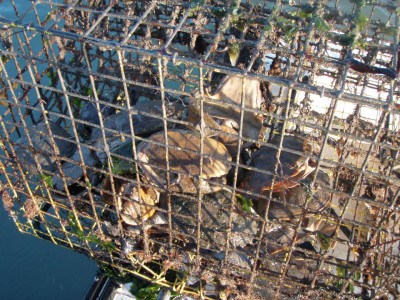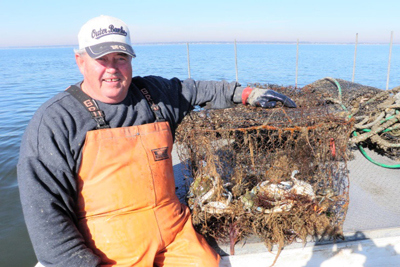Derelict Crab Traps Hitting Virginia Blue Crabs Hard
MAY 16, 2014 -- The Virginia Institute of Marine Science's Center for Coastal Resources Management estimated that 900,000 blue crabs are killed each year in derelict pots in Virginia. There are close to 800,000 commercial crab pots licensed in Chesapeake Bay and about 20 percent are estimated to be lost every year.
Commercial fishers removed about 32,000 lost and abandoned blue crab pots from 3,300 km2 of Virginia's Bay bottom over four consecutive winters through the Blue Crab Fishery Resource Disaster Relief Plan, a program funded through NOAA in response to the declaration of a commercial blue crab fishery failure in Chesapeake Bay in 2008. In those pots, 40 species of invertebrates, fish, birds, and mammals and over 31,000 animals were captured.
But it is not all bad news.
Areas dense with crab pots have been identified and can be targeted for derelict gear removal and enforcement of existing regulations that require the removal of all gear during the closed fishing season in winter months. Other solutions include better educating vessel operators on derelict gear impacts and gear avoidance techniques and the application of innovative biodegradable escape mechanisms to disarm lost gear and prevent needless mortality.
Read more on the Marine Debris Blog or go straight to the study in Marine Debris Bulletin: Derelict fishing gear in Chesapeake Bay, Virginia: Spatial patterns and implications for marine fauna.
For more information about the removal project, visit the NOAA Marine Debris Program's website or contact Jason Rolfe.
Go back to OR&R Weekly Report.


